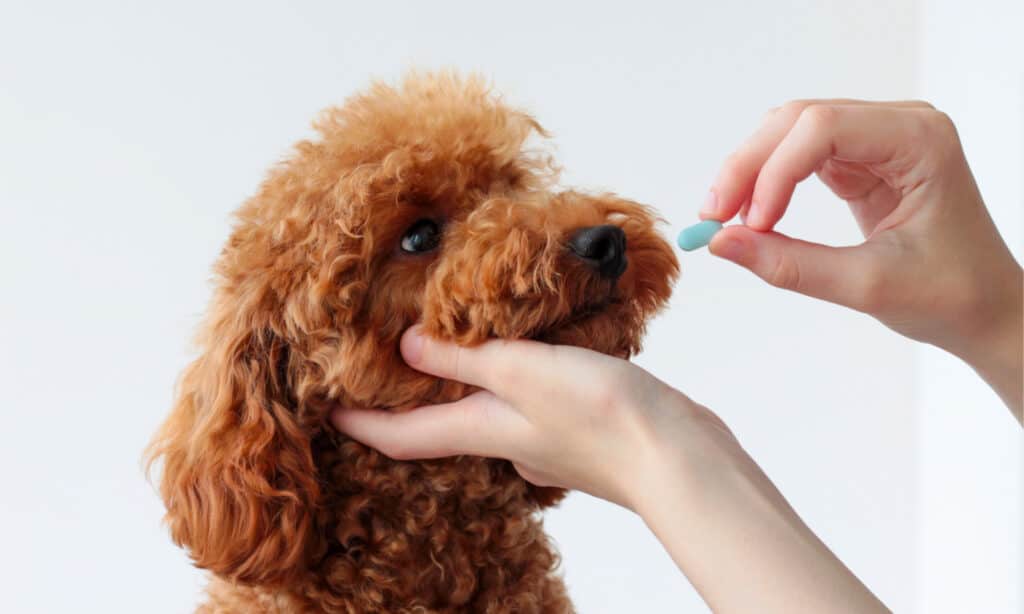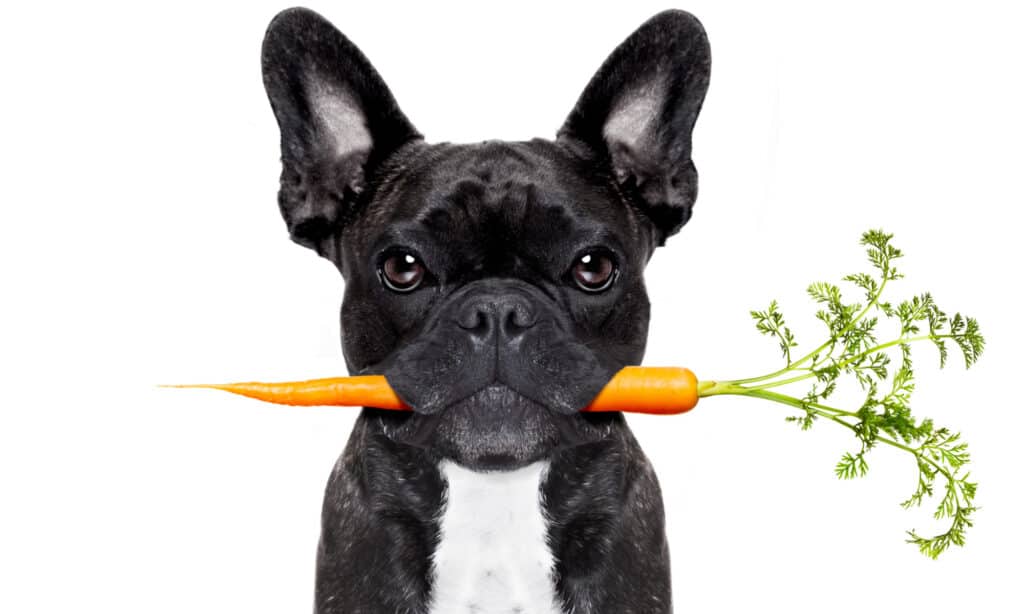Garlic is considered one of the oldest medicinal foods for human consumption as prescribed by the famous ancient Greek physician, Hippocrates. And many of these health benefits have been confirmed by modern scientists and health practitioners.
However, there’s always a debate and rift of ideas over whether garlic is toxic to your dog or not. Well, to clear up all doubt, garlic is toxic to your dog’s health.
In this article, we’ll discuss a few reasons why garlic is not safe for your dog, the risks attached to feeding your dog garlic, what to do if your dog eats garlic, and other food alternatives for garlic.
Reasons Why Garlic Is Not Safe for Your Dog to Eat
It’s a Member of the Allium Family
Garlic is one of the plant species classified under the Allium family. Plants in the allium family are known for their characteristic smell because they contain the compound allicin.
Allicin is an important compound found in garlic and other members of the allium family like onions, chives, leek, etc. In humans, allicin is known for its medicinal benefits on the gastrointestinal tract and digestion process generally.
However, in dogs, allicin can be very unstable and is converted into other compounds that can make your dog very uncomfortable. Heat reduces allicin’s yield and instability, but this doesn’t make it any less toxic to your dog.

Pizza is just one of countless human foods that are seasoned with garlic, none of which are safe for your dog to eat.
©iStock.com/ulkas
Thiosulfates
Thiosulfates are present in garlic, and they are known to be one of the reasons why garlic is highly toxic to your dog’s health. Humans have an enzyme in their intestinal tract that can digest thiosulfate without adverse effects, but this enzyme is absent in dogs.
Thiosulfate is toxic to dogs because it causes clumping of hemoglobin that is responsible for transporting oxygen within your dog’s body.
The clumping causes less oxygen and nutrients to reach your dog’s tissues. Your dog will appear pale, weak, and lethargic due to oxygen and energy deficiency.
N-Propyl Disulfide
This is the primary toxic ingredient in garlic. N-Propyl Disulfide is an oxidant, and dogs’ red blood cells (RBC) are more sensitive to oxidative damage.
This is because there are more areas on dogs’ blood that oxidizing agents can bind to. When N-Propyl Disulfide binds to your dog’s RBC, your dog’s body immunity recognizes the attachment as a foreign body and destroys the RBC to remove the foreign attachment.
This is known as Hemolysis-RBC destruction and results in hemolytic anemia. This will be explained in more detail later in this article
How Much Garlic Is Considered Toxic to Your Dog?
Garlic intake is measured in grams per kilogram of body weight. It takes about 15-30grams of garlic to cause damage to your dog’s blood.
To illustrate further, the average clove of fresh garlic weighs around 3-7grams, so your dog would have to eat around 4-5 cloves to get sick.
However, this doesn’t mean you can safely feed your dog lesser quantities of garlic. Some dogs are naturally more sensitive to garlic toxicity. Therefore, the consumption of small quantities of garlic can also cause problems.
In addition, did you know garlic is five times more toxic than onions? And according to research, onion toxicosis is noted in animals that consume more than 0.5% of their body weight at once.
Since garlic is more concentrated than onions, if your dog ingests even less than 0.5% of its weight, it can still lead to garlic toxicosis.
In short, you should not feed any quantity of garlic to your dog.
Can You Feed Your Dog Garlic Supplements?
As mentioned earlier, there’s a lot of controversy on whether garlic and its supplements are recommended and beneficial to your dog’s health. However, don’t get confused.
Studies show that feeding your dog garlic supplements has no consistent positive results. So, while it might be okay to feed your dog small doses of garlic supplements, there are no conclusive positive results to support its benefits.
However, the risks attached to feeding your dog garlic are known. So you shouldn’t feed your dog garlic supplements.
In addition, if you decide to feed your dog some garlic supplements, consult your vet first. Your vet will help you create the right feeding plan for your dog.

Research has found no consistent, positive benefits to giving dogs garlic supplements, and doing so isn’t worth the risk.
©Varvara Serebrova/Shutterstock.com
Is Garlic Bread Safe?
Garlic bread is a tasty food that most people enjoy, and it will most likely catch your dog’s attention. So can you get your canine friend some garlic bread? The answer is “no.”
Garlic bread contains butter in large amounts, oil, cheese, and herbs that can cause gastrointestinal discomfort for your dog asides from garlic. It is also high in calories and fats, predisposing your dog to other health problems like obesity.
Risks Attached to Feeding Your Dog Garlic
As previously stated, garlic is toxic to your dog’s health. So, what should you expect if your dog eats garlic?
Anemia
Your dog is at risk of hemolytic anemia if it consumes too much garlic. This is due to the compound n-propyl disulfide, which binds with red blood cells and causes them to rupture, as mentioned above.
Rupturing of red blood cells before maturation (120 days) causes the bone marrow to release premature red blood cells that cannot serve the function of oxygen transport properly.
And when this continues, the total red blood cell count in your dog reduces, causing anemia. This can be fatal if not treated early.
Dehydration
Your dog may become severely dehydrated if it ingests too much garlic. This is a side-effect of garlic ingestion; even humans are advised to constantly rehydrate after consuming garlic. You may notice that your dog starts drooling and panting. Make sure it gets enough water to keep it rehydrated.
Gastrointestinal Discomfort
Dogs with sensitive stomachs are prone to gastrointestinal distress after consuming garlic. This is because dogs lack all the enzymes needed for the complete digestion of garlic. And the accumulation of the undigested remnants can cause stomach upset.
What Should You Do if Your Dog Eats Garlic?
The signs of garlic poisoning in dogs are:
- Garlic breath (the characteristic smell of garlic in its mouth confirms that it has eaten some garlic)
- Vomiting
- Diarrhea
- Lethargy
- Pale gums
- Abdominal pain
- Discolored urine
- Increased heart rate
- Breathlessness
- Nausea
If you notice any of the symptoms mentioned above, your next action should be to take your dog to a veterinarian for proper treatment.
There’s no serious cause for alarm as garlic poisoning is rarely fatal, but your dog must get intensive care as early as possible.
Your veterinarian might give your dog activated charcoal to help flush out the toxins and prescribe additional medications to control vomiting, diarrhea, and a few other symptoms.
Also, your vet might recommend keeping your dog on intravenous fluids to keep him hydrated. And in extreme cases, your dog might need a blood transfusion.
Other Food You Should Avoid Feeding Your Dog
Garlic is not the only food that is toxic to your dog’s health. You should not feed your dog the following foods as well:
You can find a list of other unsafe and even toxic foods here. A-Z Animals updates this list regularly to help our readers make informed decisions about their dog’s diet and health.

There are many healthy alternatives to garlic that you can feed your dog, including carrots — including the leaves and stem.
©Javier Brosch/Shutterstock.com
Healthy Alternatives to Garlic For Your Dog
There are many healthier alternatives to garlic that you can feed your canine friend. The foundation of their diet should be high-quality dog food. If you need some fruit or vegetable options for your dog, we encourage you to try any of the following:
Conclusion
Garlic and anything containing garlic are toxic to your dog. We recommend healthy alternatives listed in the section above. However, always consult your veterinarian before trying out new treats or food for your canine friend.
The photo featured at the top of this post is © Allium Sativum/Shutterstock.com
Ready to discover the top 10 cutest dog breeds in the entire world?
How about the fastest dogs, the largest dogs and those that are -- quite frankly -- just the kindest dogs on the planet? Each day, AZ Animals sends out lists just like this to our thousands of email subscribers. And the best part? It's FREE. Join today by entering your email below.
Thank you for reading! Have some feedback for us? Contact the AZ Animals editorial team.






